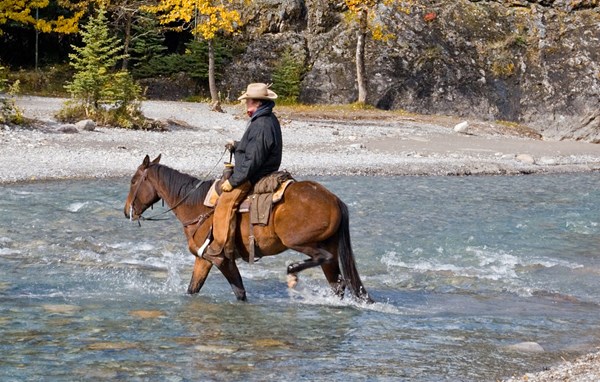 Credit: Thinkstock
Credit: ThinkstockThere are hundreds of leather care products on the market today.“Some are claimed to lubricate, or leave no film on the leather, or are good for the stitching,” said Jeff Minor, a saddle maker near Baker, Idaho. “All of these have their place, but basically anything that is natural is the best for leather.”
Leather is a natural product, so it’s always wise to use a natural leather care product.“Advertisers push their particular product, no matter what’s in it,” he said. “It might be okay to use it on your tack today, but 10 or 20 years down the road, what will it have done to the leather?”
The problem is that some products can hasten deterioration.
“Most leather today is sewn with nylon and polyester thread, rather than linen cord (a natural fiber), which is probably more susceptible to the harmful effects of any kind of petroleum,” Minor said. “Today these petroleum-based products are probably not as harmful to the nylon thread, over a short-term period, but won’t be good over the long haul.It will break down something sooner that was stitched with linen or cotton thread.Many of the new products that have come out in the past 10 years haven’t been tested over many years; they are too new for us to know if the leather or stitching will still be in good condition 20 or 30 years from now.
“You look at old saddles that were well cared for, and they are still in excellent condition,” he added. “Some of the old saddle makers recommended use of un-salted butter as a leather dressing, or a fine grade of olive oil, or 100% neetsfoot oil.These are natural products.”
There are many saddles that are 100 years old or more that are still in good shape because they were taken care of with natural products, and even the linen stitching is still good.
“Today some people don’t keep a saddle more than 5 to 10 years,” Minor noted. “They want a new one or something different, and may never know will happen to that saddle in 30 or 40 years with the leather products we’re using now.But I feel that the more natural, the better.” He advised that you read product labels to see what the product contains.
“Any product that is petroleum-based is not good for leather,” he stressed. “Some people claim it helps the material penetrate better into the leather and then evaporates off, but there’s still always some petroleum residue left.The 100% pure neetsfoot oil is made from cattle hooves and is natural.Some manufacturers sell their product as prime neetsfoot oil or just neetsfoot oil, and if you check the ingredients you’ll find they contain mineral oil or some kind of petroleum distillant.If the label says 100% neetsfoot oil, it shouldn’t have any of those in it, but I’ve found that some do contain a little carrier of some kind, and I feel this is false advertising.”
Minor doesn’t recommend some leather care products because they contain a petroleum product. “Always find out what is in the product before you buy it,” Minor stressed. “Right now I am using some R.M. Williams saddle dressing that comes from Australia, and many saddle makers like it. There are many kinds of saddle dressings.Ray Holes’ saddle butter is excellent.It has several different ingredients including carnuba wax, beeswax, pure neetsfoot oil and different fats and tallows, with no synthetic oils.Each ingredient is a by-product of animal or vegetable material.Some people say you can use kidney fat on leather, but kidney fat contains a little salt and salt is not good for leather.
Sweat is harmful because of the salt; it dries the leather, and the leather will eventually crack and deteriorate if you don’t get the salt out.This is why it is so important to clean saddles, bridles or any piece of tack that comes into contact with sweat.
“There are many things on the market for leather care, and what you select will depend on what kind of use you are giving your saddle, chaps, shoes, boots, etc.,” said Minor. “You can use a chap wax, which is a good water repellent because it actually closes the pores of the leather so water cannot penetrate.Whenever you close the pores, however, this doesn’t give leather a chance to breathe or to absorb lubrication.Most of the time the wax wears off, especially on chaps if they’re getting a lot of use.But if you simply apply the wax and the leather doesn’t get used (to wear it off), this can be hard on the leather unless it can breathe from the other side.”
He also offered tips for rawhide care.“Hang rawhide reins straight and maybe apply some glycerin soap, but nothing that contains oil,” said Minor. “Some people say you can treat rawhide the same as you would leather, but I would never put oil on rawhide.Ray Holes rawhide cream is one of the best products for rawhide; it contains some kind of soap and glycerin, along with another additive that helps penetrate and soften the rawhide and give it lubrication.Rawhide will become as stiff as leather if it’s had sweat on it or gets wet and dry, wet and dry.It needs some kind of lubrication to keep those fibers from breaking down.”
He also noted that rawhide tends to dry stiff, then if it gets bent or kinked, it will break the fibers.


